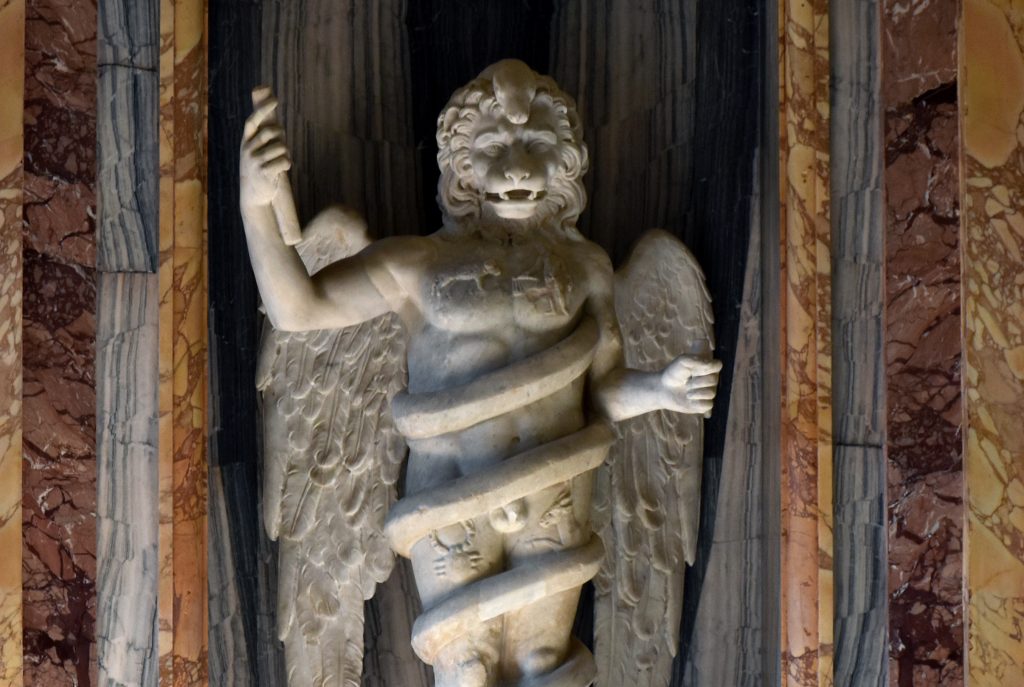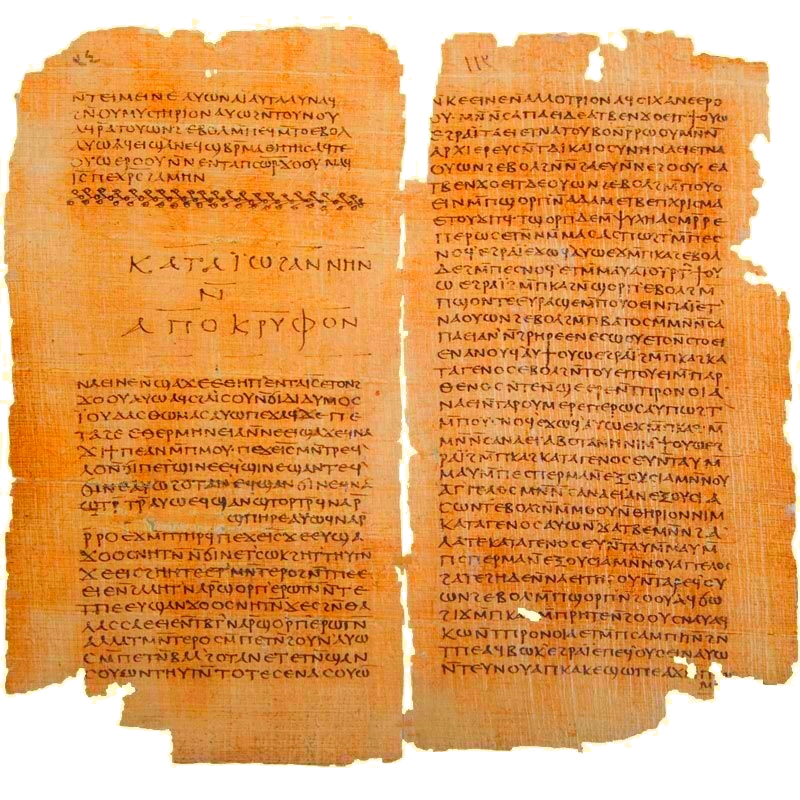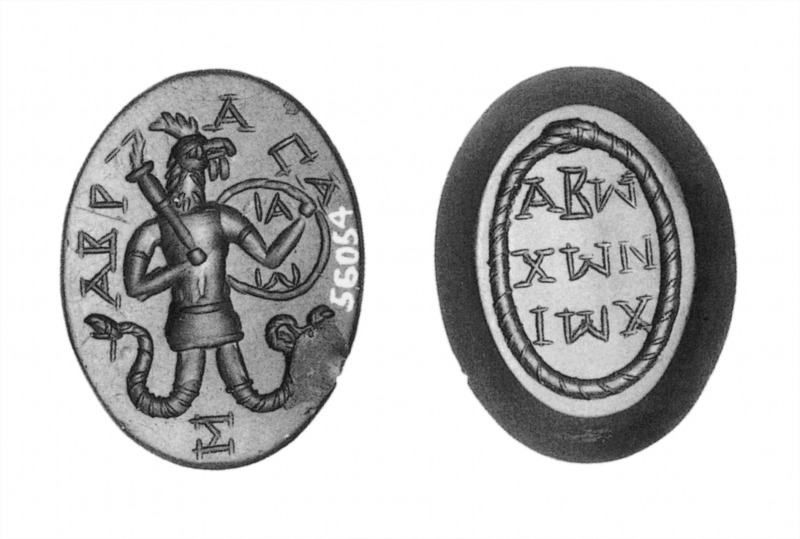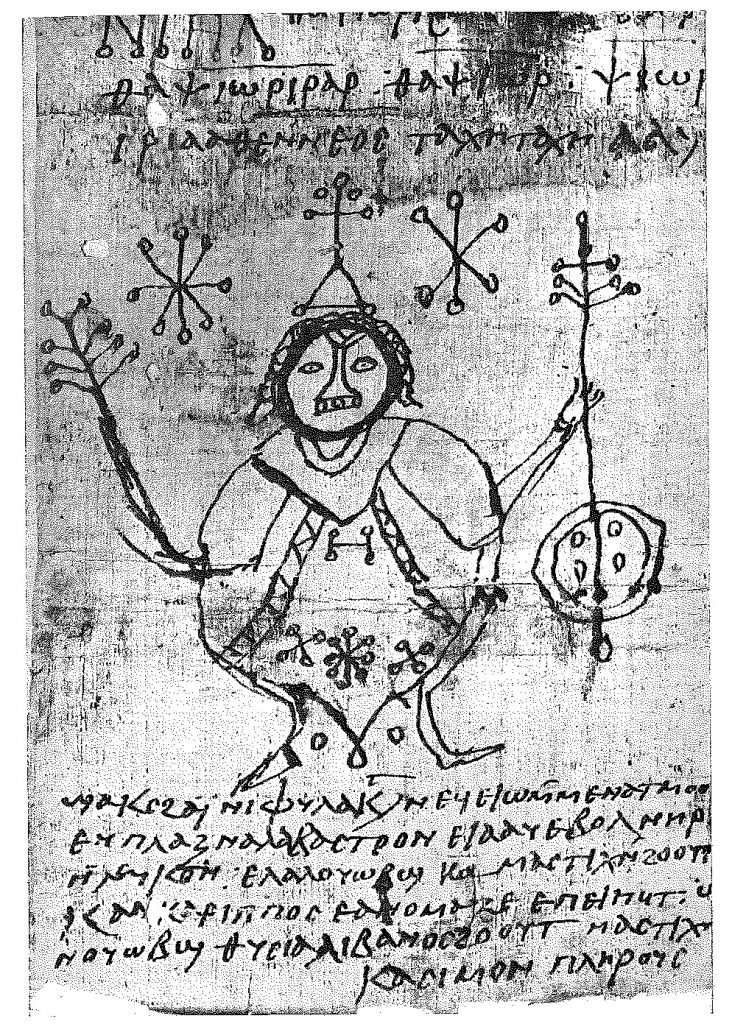
Gnosticism is one of the major areas of research within Coptic Studies, and yet, like magic, it is a controversial concept, deconstructed by its specialists to the extent that most scholars use the term “gnosticism” in scare quotes, or avoid it altogether. Yet studies of Gnosticism continue to appear, perhaps demonstrating that, despite its problems, the term still has some usefulness. In this post we will use “gnostic” and related terms as shorthands, but it is worth remembering that these are problematic labels, which may not have been those used by those we would call “gnostics”.
Readers of this blog may already know that “gnostic” comes from the Greek word gnôsis (“knowledge”). Those who claimed to have special knowledge could be called gnôstikoi (“knowers”), and certain religious systems in which special knowledge of the divine realm were important to salvation are considered by modern scholars as forms of “gnosticism”. Several writers have hypothesised that certain forms of Gnosticism pre-date Christianity, and some would classify non-Christian systems such as Hermetism as gnostic, but the clearest examples of gnosticism are non-orthodox forms of Christianity which flourished in the second through fifth centuries CE. In fact, the term gnôstikos (“gnostic”) comes from the writings of the Church Fathers, the key authors of the early orthodox church, who used it to describe Christian movements that they saw as heretical.
One of the best attested of these systems is that which modern scholars refer to as Sethian gnosticism. This is one of the main examples used by Irenaeus of Lyon (born ca.130/140 CE), the earliest author to discuss the gnostics, in his work On the Detection and Overthrow of the Falsely So-Called Gnosis, more often known as Against the Heresies. What distinguished Sethianism and similar systems from orthodox Christianity was their cosmology, and the additional rituals this cosmology required. Sethianism described God as a series of interconnected aspects, which emanated outwards from the central godhead. These aspects are often called aeons, from the Greek for “ages” or “eternities”. David Brakke provides us with a useful way of thinking about these aeons – just as we might think of our own minds as consisting of several parts – our consciousness, our memories, our emotions, and so on – Sethianism saw the aeons as aspects of a single divine mind – Intelligence, Forethought, Wisdom, and so on. The highest aspect of God – known as the Father of the Entirety or the Invisible Spirit – was unknowable to humans, but the lower aspects, among whom was the Self-Created One (Autogenês), identified with Christ, could be known by, and might interact with, humans.
While the Sethian creation myth had multiple versions, they tend to describe the creation of the material world as a deviation from the perfection of the divine realm. In several tellings, it is the result of one of the lowest aeons, Wisdom (Sophia), trying to create without the permission of the rest of the divine realm, and giving birth prematurely to a monstrous deity, called Ialdabaoth or Saklas. Ialdabaoth mistakenly thinks himself to be a self-created god, and begins to make his own universe in imitation of the true divine realm, including human beings, who contain a spark of the true divine essence. This is essentially a re-interpretation of the creation story of Genesis, but with God recast as an ignorant demiurge (“craftsman”), whose imperfection is the cause of the evil and suffering of the material real. The Sethian understanding of Christian salvation, therefore, involved revealing the knowledge (gnôsis) of this reality to those who were ready for or worthy of it, and using ritual means to rise past the demiurge and his servants to the true divine realm.

Many other Christians were horrified by these ideas, and once the orthodox church gained the support of the Roman emperors, the suppression of the alternative Christianities we class as gnostic meant that almost none of their writings survived to the modern day. The major exception is a series of Coptic codices found in the course of the 19th and 20th centuries, the most famous of which are the thirteen manuscripts of the Nag Hammadi Library, discovered in upper Egypt in 1945. Thanks to these texts, we are finally able to read the original writings of gnostic groups – Sethians as well as others, such as Valentinians.
The location of Nag Hammadi, the nearest major town to where the collection of texts known as the Nag Hammadi Library were found in 1945
But before the discovery and publication of these texts, our knowledge of the different forms of gnosticism came almost entirely from orthodox writers such as Irenaeus, who described gnosticism in negative terms. Such writers often accused gnostics of various forms of magical practice, including the use of love spells and divination rituals, as well as what we would call stage magic, to fool the gullible. As Malcolm Choat has recently pointed out, when Greek and Coptic magical gems and papyri began to be found in Egypt in the 19th century, scholars often considered them to be the products of gnostic groups, and the habit of referring to them as “magical” rather than “gnostic” only became standard in the course of the first half of the twentieth century.

In some ways this evaluation of these texts was not completely misplaced – the magical papyri do contain many features attributed by orthodox authors to the gnostics: the chanting of the Greek vowels, cosmologies including beings with hybrid animal-human bodies,weird names such as the famous Abrasax, and the less famous Sethian Luminaries, the companions of the Self-Created Christ: Davithe, Eleleth, Oriael, and Harmozel. These features are also found in real gnostic texts, like those of the Nag Hammadi Library.
Two recent articles, one by Dylan Burns, the other by Malcolm Choat, have attempted to clarify the relationship between gnosticism and Greek and Coptic magical texts. They suggest that although there are many overlaps in content between magical and gnostic material, this is not because magical texts are necessarily gnostic, or that gnostics necessarily used magic more than other Christians. Instead, both were creative religious expressions which sought to understand the divine world, for salvation in the case of gnostic texts, and for more immediate gains in the case of magic. As a result, they both draw upon non-standard religious ideas which were present at the time, divine beings who existed in the popular imagination or in learned speculation but which were not part of traditional cosmologies.

An example which illustrates this relationship well is British Library Oriental Manuscript 6794, a rotulus (vertical roll) dating to the late sixth or early seventh century. The text contains a recipe, written for a man named Severos, son of Anna, calling upon an angel to give him a good singing voice. Of interest here is the fact that the angel is called Davithe Eleleth – a name which combines those of two of the Sethian luminaries. The reason for this seems to be that Davithe’s name was probably derived from David, the Israelite King who was famed for his ability to play the lyre; the text asks for Severos to be able to play for his audience with the same virtuosity as David when he plays for God the Father. The manuscript has an image of Davithea on it, and he is shown holding with a lute in his left hand and wearing pointed cap surmounted by a cross.
It is tempting to think that we have an example here of a magical text using a figure drawn from Sethian gnosticism, but Dylan Burns points out that many of the figures of gnosticism seem to have a double life – both as figures within complex and comprehensive gnostic systems, and also as more generic angels in magical material and non-gnostic literary texts. None of the details of the description of Davithea in the spell we have looked at can be easily related to his role as a Sethian luminary, but its picture of him – as a divine musician called upon to help out a singer – is coherent within the text. Burns suggests that Davithea, and others like him, were independent, pre-existing figures who could be incorporated into gnostic systems, but did not necessarily derive from them. If this is the case, then magical and gnostic texts both provide us with independent vantage points on religious beliefs and practices beyond the narrowly defined orthodoxy.
These conclusions are not necessarily true for all texts; Iain Gardner, who we introduced in our earlier post on Manichaeism, has suggested that a very interesting series of invocations to a being called the Baktiotha may have been adapted from Sethian baptismal rituals. But we’ll have to discuss these another day.
References and Further Reading
Brakke, David. The Gnostics: Myth, Ritual and Diversity in Early Christianity. Cambridge, Massachussets – London, England: Harvard University Press, 2010.
Introduction to and discussion of Sethian Gnosticism.
Burns, Dylan M. “Magical, Coptic, Christian: The Great Angel Eleleth and the ‘Four Luminaries’ in Egyptian Literature of the First Millenium CE”. In The Nag Hammadi Codices and Late Antique Egypt, edited by Hugo Lundhaug and Lance Jenott. Tübingen: Mohr Siebeck, 2018, 152-153. URL
One of the two recent articles discussing the relationship between magical and gnostic texts.
Choat, Malcolm. “Gnostic Elements in Ancient Magical Papyri”. In The Gnostic World, edited by Garry W. Trompf, Gunner B. Mikkelsen, and Jay Johnston. Abingdon – New York: Routledge, 2019. URL
The second of the two recent articles discussing the relationship between magical and gnostic texts.
Gardner, Iain. “The Sethian Context to a Coptic Handbook of Ritual Power (= P. Macquarie I)”. Proceedings of the 27th International Congress of Papyrology, edited by Tomasz Derda, Adam Łajtar and Jakub Urbanik. Warsaw: University of Warsaw, 2016, 755-766.
A discussion of the possible survival of a Sethian ritual text in a 7th-8th century Coptic magical manuscript.
Kropp, Angelicus. Ausgewählte koptische Zaubertexte. Textpulikation. Vol. 1, Bruxelles: Édition de la Fondation Égyptologique Reine Élisabeth, 1931, no. E, pp. 29-34.
The Coptic text of the papyrus discussed above (British Library Oriental Manuscript 6794) is published here as text E.
Meyer, Marvin W., and Richard Smith. Ancient Christian Magic: Coptic Texts of Ritual Power. Princeton (New Jersey): Princeton University Press, 1999, no. 129, pp. 279-280.
An English translation of the text discussed above (British Library Oriental Manuscript 6794) is published here as text no. 129.
Robinson, James M. (director). The Nag Hammadi Library in English. Leiden: E.J. Brill, 1978.
An accessible translation of the texts from the Nag Hammadi Library.

2 Comments
Robert
Hey great article just found out about your stuff. Do any gnostic texts or books explain gnostic magic or gnostic rituals ? Angel magic or magic with the aeons or luminaries or even the pleroma ! What do you practice for getting in touch with Angels? Anyways thanks for the good read and I appreciate any comment from you !
Pingback: